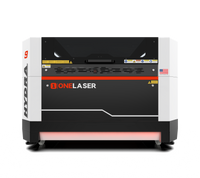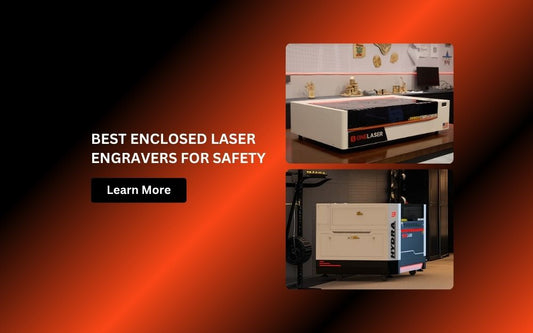Laser cutting is one of the most efficient and precise methods for processing materials across a range of industries from manufacturing and rapid prototyping to custom signage, rubber seals, and industrial fabrication. As the technology advances, the number of laser cutting systems on the market continues to grow.
Understanding the types of laser cutting machines is crucial for professionals looking to optimize cut quality, production speed, and material compatibility. This guide breaks down the major laser types by source, application method, and performance characteristics.

1. Different Types of Laser Cutting Machines by Laser Source
Laser cutting machines are typically categorized by the type of laser source they use. Each type operates at a specific wavelength and energy output profile, making them suitable for different materials and use cases.
1.1 CO₂ Laser Cutters
CO₂ laser cutters are among the most versatile and widely used machines. Their ability to cut and engrave non-metallic materials with smooth, polished edges makes them a popular choice for creators and manufacturers alike.
- Wavelength: 10.6 μm (infrared)
- Best for: Wood, acrylic, paper, leather, rubber, and textiles
- Common applications: Signage, packaging, architectural models, custom engraving
1.2 Fiber Laser Cutters
Fiber lasers deliver high beam density, making them ideal for fast, precision cutting of reflective and conductive metals. They are not typically suitable for plastics, wood, or rubber.
- Wavelength: 1.06 μm (near-infrared)
- Best for: Metals such as stainless steel, aluminum, copper, brass
- Common applications: Sheet metal fabrication, industrial part marking, automotive components
1.3 Crystal (YAG/YVO4) Laser Cutters
Crystal lasers offer high precision for small-scale work but have largely been replaced by fiber lasers in many modern workflows.
- Wavelength: Around 1.06 μm
- Best for: Thin metals, micro-machining, semiconductor and electronics industries
- Drawbacks: Shorter operational life, higher maintenance
2. Understanding the Main Types of Laser Cutting Methods
Apart from the laser source, machines also differ in how they process material. Each method has unique advantages depending on the material's properties and desired outcome.
Fusion Cutting
- Melts material and blows it away using an inert gas like nitrogen
- Common for stainless steel and aluminum
Vaporization Cutting
- Vaporizes the material directly with concentrated heat
- Best for wood, plastics, and foams
Thermal Stress Cracking
- Applies heat to brittle materials to induce controlled fractures
- Used mainly for cutting glass or ceramics
Reactive Cutting
- Combines laser energy and oxygen to ignite a controlled burn
- Ideal for thick carbon steel, delivering fast cuts with oxidized edges
Knowing these methods helps in selecting the most suitable types of laser cutting machine for specific use cases.
3. Factors to Consider When Choosing a Laser Cutting Machine
Investing in a laser cutting machine is a significant decision that affects your productivity, product quality, and operating costs.
To choose the right system, it's essential to evaluate your specific use case and long-term needs. Below are the most critical factors to consider:
3.1 Production Volume
Your throughput requirements will heavily influence the type of machine you need.
- For low- to mid-volume operations, a 60W–100W CO₂ system offers a balance of versatility and affordability.
- For industrial or high-volume applications, fiber lasers or dual-head CO₂ machines are preferable due to faster cutting speeds and minimal downtime.
3.2 Cut Quality and Edge Finish
Cut aesthetics matter—especially in signage, retail, and packaging.
- CO₂ lasers produce smooth, flame-polished edges on acrylic, clean kerfs on wood, and sharp detail in engraving.
- Fiber lasers deliver fine, burr-free edges on metals and are particularly effective for intricate part geometries or thin sheet metal cutting.
- Ensure the system has stable motion control and precision optics to maintain cut quality across large areas.
3.3 Maintenance and Cost
Your total cost of ownership includes more than just the purchase price.
- Glass CO₂ tubes are less expensive but typically have a lifespan of 1,000–2,000 hours and require water cooling.
- RF CO₂ tubes offer better beam stability and longer life (up to 10,000 hours), but come at a higher initial cost.
Learn more:
- RF CO2 Laser Vs Glass Tube CO2 laser - Which Better?
- Laser Engraver Maintenance: 6 Essential Parts to Clean

- Fiber lasers require minimal maintenance, but the machines are more expensive upfront.
- Don't forget to budget for exhaust systems, replacement optics, and filter maintenance.
3.4 Software Compatibility
A good software interface can significantly reduce job prep time and errors.
- Look for support with platforms like LightBurn, RDWorks, AutoCAD, or CorelDRAW.
- Features like layer control, preview simulation, and material libraries help standardize workflows and improve operator efficiency.
Learn more: Best Laser Engraving Cutting Software

3.5 Ventilation and Safety Systems
Proper exhaust is non-negotiable for both user safety and machine durability.
- Materials like MDF, rubber, and synthetic foams release fumes that can damage optics and create health hazards.
- Choose machines with built-in fume extraction, filtered exhaust ports, or compatibility with external air filtration units.
3.6 Material Types and Thickness
Start by identifying the core materials you'll be working with—whether it's metal, wood, acrylic, rubber, or fabric. Different laser types and power ratings are optimized for different substrates.
- CO₂ lasers are ideal for non-metals such as acrylic, wood, paper, rubber, and leather. They are available in various power levels for cutting from 1 mm thin sheets to 25 mm acrylic or plywood. Learn more: Laser Engraving & Cutting Chart
- Fiber lasers excel in cutting reflective metals like stainless steel, brass, and aluminum, and can process thicknesses up to 20 mm or more with precision.
- For hybrid workflows (e.g., cutting wood and engraving anodized aluminum), look for a system with dual-laser support or swappable modules.
Material Compatibility by Laser Type
Not all lasers can handle all materials. Selecting the wrong combination can result in poor cuts, excessive charring, or dangerous fumes.
Here's a breakdown of which materials are compatible with which types of laser cutting machines:
Acrylic
- Cast acrylic is the gold standard for laser work. It cuts cleanly with CO₂ lasers and with appropriate settings yields polished, glass-like edges straight off the machine.
- Extruded acrylic is also laser-cuttable, but tends to melt and char more easily. Use lower power and faster speeds to reduce edge discoloration.
Tip: Always check the label or ask your supplier to confirm the acrylic type.
Learn more: Laser Engraving Cutting Acrylic - Tips, Ideas & Settings

Metals
- Fiber lasers are ideal for cutting and engraving metals. Their wavelength is efficiently absorbed by stainless steel, carbon steel, aluminum, brass, and copper.
- CO₂ lasers can only cut metal with the help of coating sprays, high-assist oxygen, or thin-film materials, and are usually used for engraving anodized aluminum or marking coated metals.

Woods
- CO₂ lasers excel at processing hardwoods, softwoods, plywood, MDF, and veneer sheets.
- Be aware of resin content, which can cause smoke, flare, or inconsistent burns. Use air assist and clean optics regularly to maintain performance.
- Use caution with compressed wood boards, which may contain adhesives that emit harsh fumes.
Learn more:
- Laser Engraving Cutting Wood - Ultimate Guide
- How to Choose the Best Wood for Laser Engraving and Cutting?

Composites
- Many fiber-reinforced plastics and laminates can be processed using a CO₂ laser, but test cuts are recommended due to the risk of delamination.
- Always verify whether the resin system includes PVC or other halogenated compounds before cutting.
Rubber
- Use only laser-safe rubber sheets—typically labeled as "laser rubber" or "odorless rubber."
- CO₂ lasers are well-suited for rubber stamp production, gasket cutting, and engraving on soft rubber materials.
- Avoid PVC rubber blends, as they emit corrosive chlorine gas when lasered.
Learn more: Best Laser Engraver for Rubber Stamps
Foam
- Closed-cell foam (like EVA and polyethylene) cuts well with CO₂ lasers but requires strong ventilation due to odor and vapor release.
- Open-cell foams can char more easily and may not produce clean edges without low-power, high-speed settings.
- Avoid foams containing urethane or PVC-based compounds.
Using the right laser source for each material improves edge finish, preserves optics, and ensures safe operation.
4. Best Laser Cutter With Perfect Cutting Performance
For professionals seeking clean edges, speed, and repeatability, machine quality makes all the difference. Whether you're working with acrylic, rubber, or light composites, machines that combine structural integrity, laser power, and motion precision stand out.
Key Features That Define Cutting Precision
Stable Mechanical Frame
Reinforced gantries like those found on the Hydra 9 absorb vibration and maintain accuracy, even at high-speed operation across a 900×600 mm bed.

High-Quality Optics and Beam Control
The Hydra 9 includes a 100 W DC glass tube and a 38 W RF laser. The DC laser provides high-output cutting power, while the RF tube offers ultra-fine engraving detail (~0.07 mm dot size). Dual-laser capability allows seamless switching between engraving and cutting tasks.
Learn more: RF Laser Tube Frequency Tips for Precise Engraving
Precision Motion System
Closed-loop stepper motors, available on Hydra machines, enable consistent path tracking with sub-0.01 mm accuracy.
Air Assist Optimization
Built-in high-pressure air assist removes vaporized debris, reduces discoloration, and enhances cut edge quality.
Advanced Bed Design
The OneLaser X Series features a honeycomb bed, while the Hydra Series (Hydra 7, 9, 13, and 16) support adjustable knife-blade beds—ideal for cutting thicker stock and rigid materials without back flash.
Autofocus and Z-Axis Control
Hydra machines are equipped with motorized Z-lift and optional autofocus for consistent results across materials of varying thickness.
Summary Table of Recommended Laser Cutters
|
Model |
Work Area |
Laser Setup |
Use Case |
|
Compact desktop |
55W CO₂ |
Tight workspaces, precise engraving |
|
|
700×500 mm |
80W CO₂ + 38W RF |
Entry-level hybrid system |
|
|
900×600 mm |
100W CO₂ + 38W RF |
Mid-size production, dual-laser setup |
|
|
1000×750 mm |
130W CO₂ + 38W RF |
Larger cuts, clean edge finish |
|
|
1600×1000 mm |
150W CO₂ + 38W RF |
Industrial-level throughput |
These machines offer a balance of speed, control, and material versatility for any professional environment.
FAQs
Q1. What are the most common types of laser cutting machines?
CO₂, fiber, and crystal (YAG/YVO4) laser cutters. Each is optimized for specific materials: CO₂ for organics and polymers, fiber for metals.
Q2. What type of acrylic can be laser cut?
Cast acrylic is preferred for its clean edge and flame-polished finish. Extruded acrylic can be used but may require more tuning and cleanup.
Q3. What's the difference between a CO₂ and a fiber laser?
CO₂ lasers use gas tubes and work well with non-metals. Fiber lasers are solid-state and offer speed and durability for metal cutting.
Q4. Can one laser cutter handle multiple material types?
Yes. Systems like the Hydra Series can cut rubber, wood, acrylic, and mark coated metals—but not raw reflective metals unless equipped with a fiber laser.
Q5. How do I choose the right type of laser cutting machine?
Consider your materials, project scale, precision needs, and space. Then choose a machine with the right laser type, power rating, bed size, and accessories.
Have Questions? Contact Us Now!
Conclusion
From high-speed fiber lasers to versatile CO₂ platforms, the types of laser cutting machines you choose directly affect your production quality and flexibility. Whether you're cutting intricate rubber gaskets, flame-polishing acrylic signs, or fabricating metal enclosures, matching the right laser system to your workload ensures cleaner results, fewer errors, and longer machine life. Evaluate your materials, workflows, and technical requirements to make the most informed investment.
Let precision start with the right laser engraving cutting machine—and let the machine work smarter with the right configuration.

 Liquid error (sections/image-banner line 171): invalid url input
Liquid error (sections/image-banner line 171): invalid url input




